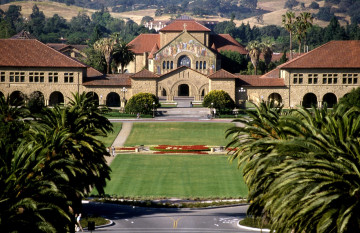David Brussat, Dr. Downtown: Gina Raimondo, Master Builder
Monday, January 19, 2015
Governor Raimondo, in office barely a week, has announced that she will don the robes of Robert Moses, the master builder of New York circa 1930-1970. He defied not only democratic principles but market forces to ram his vision down the city’s throat. Today he would cry fie on market forces - the wisdom of government will see to the apotheosis of the Route 195 land!
Good luck with that.
Moses started out creating great parks but ended up secretly amassing bureaucratic power to inflict brutal urban renewal and faceless public housing on the city. He initiated a sociopathology that has done much to sap life and prosperity from great swaths of urban America.
GET THE LATEST BREAKING NEWS HERE -- SIGN UP FOR GOLOCAL FREE DAILY EBLASTTo be fair, the Journal story by Kate Bramson, “Raimondo wants government, not market, to determine 195 redevelopment,” failed to provide the quotes to back up the ambitious headline. The reporter merely states that the governor has said she wants to change the market focus of the commission, adding in a brief interview during her inauguration that she also wants to create a master plan. If so, that would be an improvement upon the “Developers’ Toolkit” that paints a depressing vision of the future of the Knowledge District.
Colin Kane, who chairs the I-195 Redevelopment District Commission and can be charged with fathering the Toolkit, was nevertheless quoted saying something sensible: “Government plays an important role — setting priority and creating a critical mass. I think the governor’s correct in her analysis, but I’ll go back: the market, ultimately, will dictate what fills 4 million square feet.”
Like it or not, the market is always there and always has an impact. But high taxes, complex regulations and other things attributable to government, not to the market, diminish its efficiency and effectiveness. Recall that of the original 18 parcels and sub-parcels in downtown’s Capital Center - the district that served as a model for the new 195 district - eight parcels remain empty. The market had much assistance from the government in achieving that result.
And yet, if the governor seeks to play master builder, she already has work on her plate.
Trapped in a concrete girdle
The proposal for student housing on Parcel 28 in the 195 district would have been deemed a lost opportunity four years ago, after passage of the commission’s enabling legislation. Worse, the design embraces the vision in the Toolkit, which tries to balance innovative new architecture with architecture that fits into the historical context of the Jewelry District.
The result is a traditional brick building trapped in a girdle of thick concrete slabs. The design epitomizes the sort of aesthetic compromise that never satisfies anyone. To make matters still worse, the developer wants to build a second student dormitory of the same benighted design across the street from Parcel 28. The new building would require demolishing a modest but attractive historic building.
In short, the commission wants to tear down a building that is part of the very urban fabric whose reknitting was the purpose for moving a stretch of Route 195 out of downtown at a cost of $600 million. All that to make way for a piece of junk in the supposed gateway to the city’s future?
One would like to think the governor is not satisfied with that. Through her chief spokeswoman Joy Fox, Raimondo said: “Our initial look indicates that the student housing project is a positive one. We look forward to studying it further to evaluate how it will fit into a broader vision.”
Good! A broader vision to replace the narrow one represented by the Toolkit could be behind Raimondo’s desire for a new master plan for the 195 land. If the governor wants to help market forces work for instead of against the city and the state, she should ask the first developer out of the box to return with a design more appropriate for Rhode Island and its capital.
Stanford University, East Campus
For half a century, planners and architects have wrecked scores of American cities by pushing a future inspired by the Jetsons cartoon. Treating historic precedent like a germ, architects and planners mistake novelty for innovation. But the innovators of Silicon Valley know that progress in science, technology and industry builds on past precedent rather than rejecting it.
To end such disastrous thinking in Rhode Island would be the definition of innovation. But the market cannot be relied upon for that. Intelligent leadership is required. If Governor Raimondo wants to be the Ocean State’s master builder, here is a good beginning.
She already has an idea that would do nicely. In her campaign, she spoke of inviting Stanford University to open an East Coast campus in Rhode Island. New York City rejected Stanford’s proposal for such a campus on Roosevelt Island in the East River. With its famous campus blending the Richardsonian Romanesque and the Mission Revival styles amid California’s Silicon Valley, Stanford would know how to reinvent the Knowledge District.
Go ahead, Gina. Make that phone call!
Click here to visit David Brussat’s blog.
Related Slideshow: The 15 Costliest Government Programs in RI
Related Articles
- Dr. Downtown, David Brussat: Free Advice for Raimondo
- Ask Dr. Downtown: David Brussat
- Dr. Downtown, David Brussat: The 10 Buildings that Need to Be Torn Down
- Re-Introducing: Dr. Downtown, David Brussat
- Dr. Downtown, David Brussat: Free Advice for Elorza
- Dr. Downtown, David Brussat: Thinkfesting the RhodeMap
- David Brussat, Dr. Downtown: Roses and Raspberries For 2014
- Dr. Downtown, David Brussat: Hard to Out-Edge Providence
- Dr. Downtown, David Brussat: Off the Bureaucracy!
- David Brussat, Dr. Downtown: Architecture and Development




















